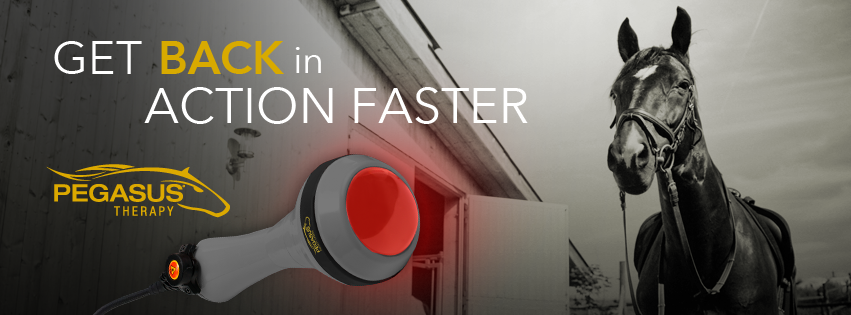Equine Therapy Success Stories: Real People, Actual Psychological Makeovers
Equine Therapy Success Stories: Real People, Actual Psychological Makeovers
Blog Article
Assessing the Performance of Laser Therapy in Horse Therapy for Injury Rehab
The examination of laser therapy's efficiency in equine injury recovery hinges on several factors, including healing time, discomfort mitigation, and tissue regrowth. Clinical researches suggest significant enhancements in conditions like tendonitis and osteo arthritis, attributed to enhanced mobile feature and raised ATP production. Veterinarians regularly observe premium outcomes with laser therapy contrasted to standard methods, positioning it as an essential aspect in equine treatment. Nonetheless, the necessity for continuous tracking and personalized therapy strategies can not be overemphasized. What specific clinical evidence sustains these claims, and how do veterinarians carry out these methods in technique?
Comprehending Laser Therapy
Laser treatment has actually ended up being an essential tool in veterinary medication, especially in the therapy of equine conditions. Known for its non-invasive nature and efficacy, laser treatment includes the application of particular wavelengths of light to stimulate tissue fixing and lower inflammation. This therapeutic technique is progressively favored for its capacity to speed up the healing procedure in equines struggling with a variety of bone and joint injuries and persistent conditions.
The key device behind laser treatment is its capability to enhance cellular features. In addition, laser therapy promotes vasodilation, boosting blood circulation and oxygen delivery to damaged tissues, thus quickening recuperation.
In equine medicine, laser therapy is especially beneficial for conditions such as tendonitis, osteo arthritis, and injury recovery. The technique is lauded for its pain-relieving residential properties, allowing horses to restore flexibility and feature more rapidly. Veterinarians likewise value its marginal adverse effects compared to various other treatment modalities, making it a trustworthy and secure alternative for equine treatment.

Exactly How Laser Therapy Works

Upon absorption, these photons set off a series of biochemical changes, enhancing mitochondrial feature and causing boosted adenosine triphosphate (ATP) production. This surge in ATP speeds up mobile metabolic rate, advertising cells repair service and regeneration. Additionally, laser treatment modulates inflammatory feedbacks by influencing cytokine levels and reducing oxidative stress and anxiety, consequently minimizing pain and swelling.
An additional substantial aspect of laser treatment is its function in enhancing microcirculation. The treatment promotes vasodilation, enhancing blood flow and oxygen distribution to damaged cells (Equine Therapy). This helps with the elimination of cellular debris and supports the spreading of fibroblasts and collagen synthesis, critical for injury healing
Professional Evidence
The efficiency of laser treatment in equine treatment has been confirmed via various medical research studies, showcasing its restorative prospective throughout a variety of problems. A research study carried out by Turner et al. (2012) showed that equines treated with low-level laser treatment (LLLT) for tendon injuries exhibited accelerated healing compared to those obtaining conventional treatments.
In a similar way, research study by Johnson and colleagues (2015) concentrated on equine muscle injuries, disclosing that laser therapy significantly quickened muscle mass fiber regeneration and lowered muscle mass stiffness. Professional evaluations have shown that laser treatment can reduce chronic problems such as osteoarthritis.
Vet Insights

Veterinarians also appreciate the versatility of laser treatment. She aims out that laser treatment can be tailored to the specific needs of each steed, making certain ideal results.
Furthermore, veterinarians value the capacity to incorporate laser treatment with other therapy methods. This multimodal technique can improve overall therapy effectiveness, offering a comprehensive solution for equine recovery. Such endorsements from seasoned specialists underscore the expanding approval and application of laser therapy in equine medication.
Practical Factors To Consider
An essential aspect of applying laser therapy additional reading in equine therapy includes understanding the sensible considerations that guarantee its effectiveness and safety. It is crucial to choose the appropriate laser gadget, as various kinds vary in wavelength, power, and penetration deepness. Veterinarians must be fluent in these parameters to customize therapy procedures properly to each injury kind
Moreover, the regularity and period of laser therapy sessions require careful planning to optimize therapeutic benefits while decreasing any type of potential negative results. Consistent tracking of the steed's reaction to treatment can lead necessary modifications in the treatment routine. Establishing a safe and controlled setting throughout therapies is additionally essential to prevent unintentional direct exposure to laser exhausts, which could damage both the horse and the handler.
Training and qualification of workers carrying out laser treatment are paramount to guarantee appropriate method and to maintain safety and security criteria. Additionally, maintaining accurate records of each session, including laser settings and observed outcomes, is important for examining the general efficiency of the therapy and for making data-driven choices.
Final Thought
Laser treatment has become an efficient technique in equine injury rehab, providing considerable benefits in recovery time, pain alleviation, and cells recovery. Professional researches highlight considerable enhancements in conditions such as tendonitis and osteoarthritis, credited to boosted mobile function and enhanced ATP production. Vet monitorings support these searchings for, highlighting superior outcomes contrasted to standard therapies. For optimal outcomes, constant tracking and individualized therapy procedures remain essential in get more leveraging the complete capacity of laser therapy in equine treatment.
Report this page